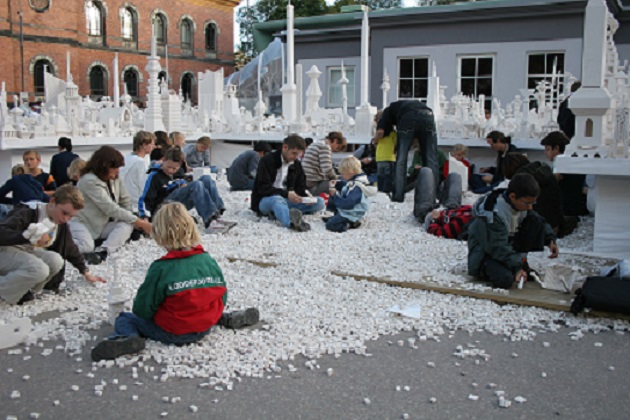Applied Art: Innovative Thinking From a Material Perspective
DOI:
https://doi.org/10.7577/if.v2i2.732Sammendrag
The modern world is continuously engaged in a racing processes aimed towards building a favourable future society. In this development, the apparent tools seem to be related to theoretical thought, new technology, avant-garde approaches and innovation. The bodily focus and the societal micro level processes are often left behind in this race. Though, in our aspiration towards urban development and the future society, we should not forget that the bodily functions and the possibilities that these give, represent one of the most fundamental and basic tools we have. This article would like to form an argument carrying out the seeming advantage of bringing in not just technological and theoretic avant-garde to the term of innovation and development, but to invite the whole body into the forming of the future, thereby seeing the term innovation from a material perspective. As the art field today is more often approaching subject matters that are primarily societal, we would like to introduce the potential of a mutual approach from the other end, seeing the art field as a central part in the creation of engagement and progress that can instigate another form of efficiency and present an expanded understanding of what innovative activity can be, and how it can be perceived and comprehended. We would like to debate an art form that takes the bodily, active and relational focus and its social context as a base and starting point on the road towards societal consciousness and potential development. Looking at the example of the art project «The Collectivity Project», this article takes it’s starting point in the following question;
How can applied art projects in connection to social contexts, like The Collectivity Project, show the art field and the bodily sensuousness as a tool in the forming of values pointing towards an alternative way of thinking societal consciousness and development?

Nedlastinger
Publisert
Hvordan referere
Utgave
Seksjon
Lisens
Forfattere som publiserer med dette tidsskriftet må være enige i følgende vilkår:
a) Forfattere beholder opphavsrett, men gir tidsskriftet rett til første publikasjon med arbeidet, samtidig som artikkelen er lisensiert under en Creative Commons Attribution-lisens som tillater andre å dele arbeidet med en anerkjennelse og referanse til forfatterskap og første publikasjon i dette tidsskriftet.
b) Forfattere må ikke inngå separate, ytterligere kontraktsmessige ordninger for eksklusiv distribusjon av artikkelens publiserte versjon av arbeidet (for eksempel legge det til et institusjonelt arkiv eller publisere det i en fagbok), uten referanse en anerkjennelse av hvor artikkelen først ble publisert. Dette gjelder for eksempel artikler som publiseres i Nordisk Barnehageforskning og som senere blir del av et doktorgradsarbeid. Da er det viktig å ha tydelige referanser til hvor og når artikkelen er publisert første gang.
c). Forfattere kan ikke legge inn sine arbeid på nettet eller publisere dem i en doktoravhandling (for eksempel i institusjonelle arkiv eller på en hjemmeside) før eller under innsendings- og fagfellevurderingsprosessen, da dette kan skape uorden i referansesystemet til artikkelen.